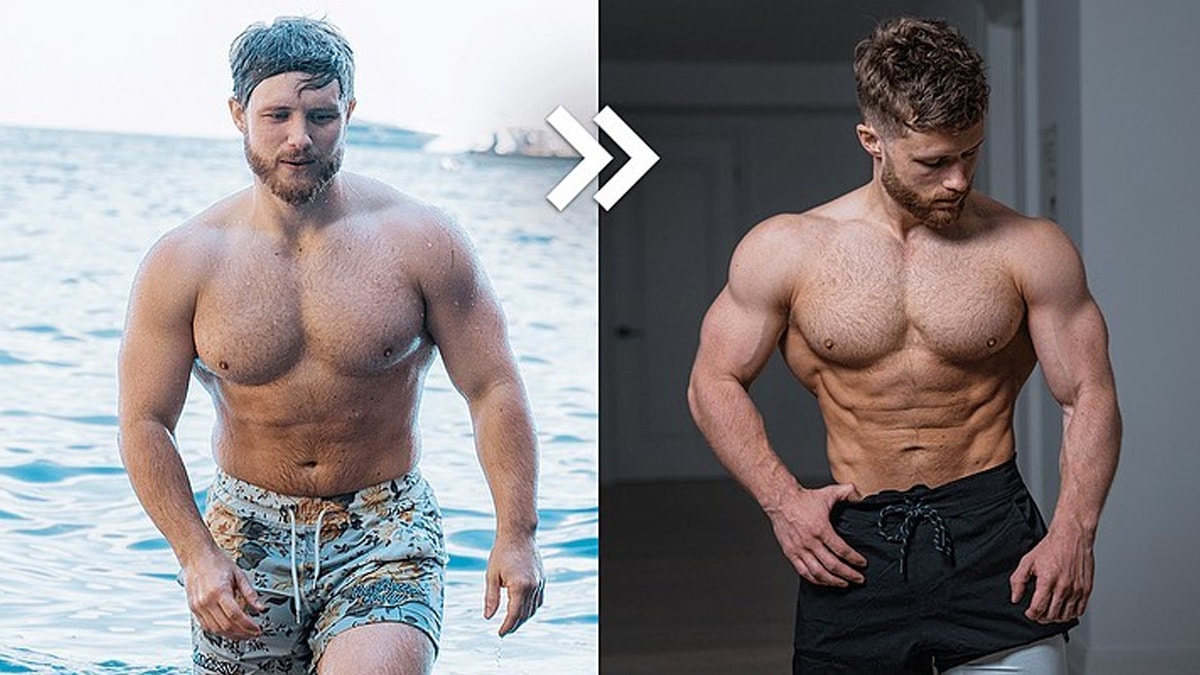Tag: Jeff Nippard
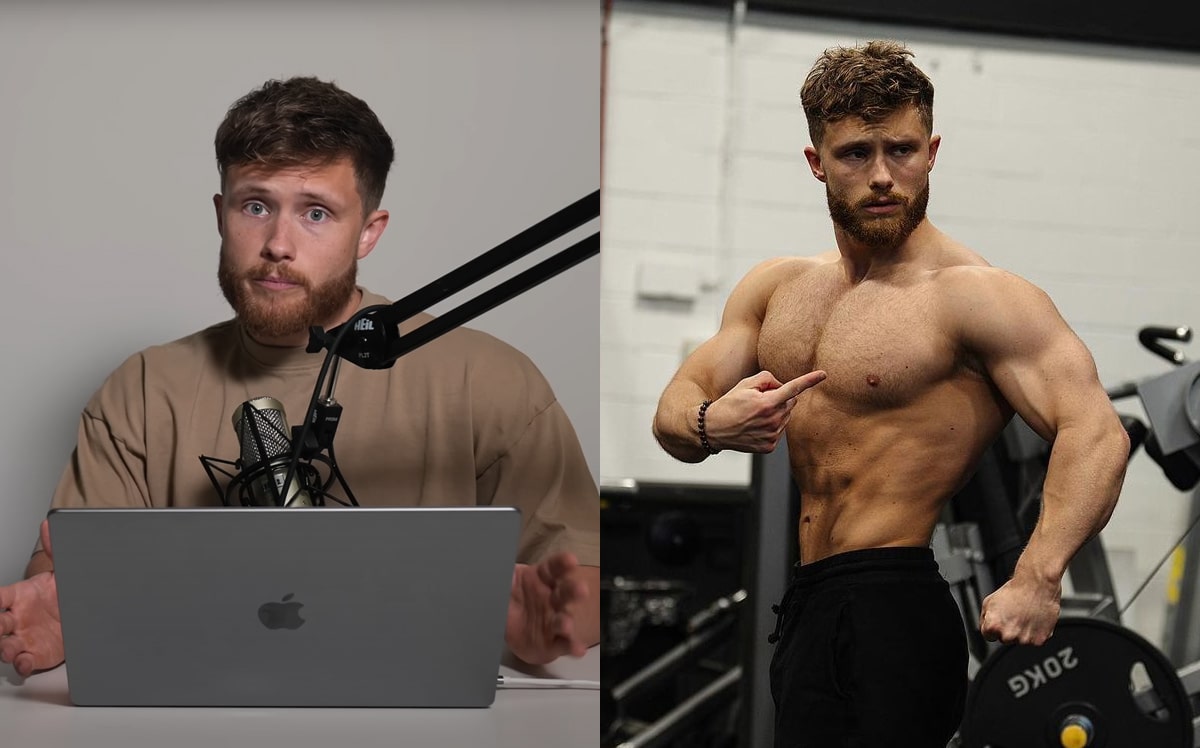
Jeff Nippard Compares Natural Bodybuilding And Impact of Steroids On Muscle Building
Jeff Nippard compared the results of natural bodybuilding vs steroid use in his recent video. Steroids or Performance Enhancing Drugs are often associated with heightened abilities and faster gains when coupled with training. However, a vast majority of the general populace are unaware of the extent to which they can alter the outcome of training.
Jeff Nippard is a renowned fitness expert from Canada. He is one of the foremost figures in the YouTube fitness community and is known for creating science-based content to educate fitness enthusiasts. As a result of this, he has amassed 3.8 million followers on YouTube.
The 32-year-old is an accomplished natural bodybuilder and powerlifter. He held the 2012 Mr. Junior Canada title and also had the Canadian national record for bench press in his name. As a coach, Nippard has trained several bodybuilders and powerlifters to achieve their goals.
In recent months, Jeff Nippard has done an in-depth study of minimalist training principles, formulating a training plan based on them. He is a student of bodybuilding and has offered guidance to the fitness community on topics like common nutrition mistakes, sustainable weight management strategies and metabolism-boosting methods.
Steroid use is one of the most debated topics in the fitness industry. While the risks associated with them are pretty much out in the open, an unbelievably large number of fitness enthusiasts and professionals lean into them for all practical purposes.
In his recent video, Jeff Nippard broke down the potential of natural bodybuilding, the impact of steroid use, and the risks associated with them to educate the fitness community about the topic. So let’s see if our opinion about steroids and natural bodybuilding changes in any way after understanding his arguments.
Jeff Nippard explains the possibilities and limits of natural bodybuilding
Jeff Nippard first covered the potential of natural bodybuilding and explained how much growth you can achieve without leaning into steroids. Nippard is the former Junior Mr. Canada title holder and also held the Canadian national record for bench press as a natural powerlifter. He has trained naturally for over 15 years. He believes that he is not an absolutely elite example of a natural bodybuilder. However, Nippard’s growth is a good benchmark to assume how much progress an individual can naturally achieve.
At 5ft-5in tall, Jeff Nippard weighs between 73 kg (160 lbs) lean and 82 kg (180 lbs) bulky. Most of the muscle growth in the 32-year-old’s training journey came in the first five years when he gained nearly 20 lbs of lean muscle mass. The growth slowed down considerably in the next decade as the Canadian put on a total of 7.5 lbs of lean muscle mass over the next decade or so.
“Every natural lifter doing most things right will experience a similar growth curve, with faster growth at the beginning and slower growth as they approach their so-called natural genetic ceiling.”
Nippard cited the study ‘Fat Free Mass Index in Users and Nonusers of Anabolic-Androgenic Steroids’ to back his claim and added:
“Men tend to max out their natural potential after gaining 20 to 40 lbs (9 to 18 kg) of muscle mass. Women tend to max out their natural potential after gaining 12 to 24 lbs of muscle mass.”
How can you reach the natural potential?
It is essential to remain consistent with training and diet for years or even decades to max out the natural potential. Regular and intense training to failure, exercise variety, and sufficient volume (5 to 15 sets per week, per body part) is a good ballpark to define consistent training. According to Nippard, staying in moderate caloric surplus and eating enough protein – approximately 0.7 grams of protein per pound of bodyweight – will almost certainly get you close to the natural potential.
Read also: Best Natural Bodybuilders
Steroids can push the growth to unthinkable extent after natural ceiling is reached
A 20 to 40-lb muscle gain is not ordinary by any means. However, is it possible to push these frontiers and gain a little more with advanced diet and training strategies? Yes. But in most cases, that extra gain will be marginal according to Nippard. Natural bodybuilders like Alberto Nunes, Jeff Alberts, and Alex Leonidas are some examples of natural bodybuilders that came really close to maximizing their natural potential. But steroids can make leaps in terms of muscle and strength gain.
Nippard referred to the study ‘The Effects of Supraphysiologic Doses of Testosterone on Muscle Size and Strength in Normal Men’ that was conducted in 1996 to put the effect of steroids in perspective. The study divided its subjects into four groups and results were measured after a 10-week period.
Two of these groups were natural individuals. The first group neither took steroids nor trained. They showed no muscle growth, which was the expected outcome. Subjects that trained but did not take steroids gained 4.4 lbs of muscle on average.
However, there was a massive difference in the subjects that received a 600 mg weekly dose of steroids. Subjects that took steroids and trained experienced a massive 13.4 lbs or 3 times more muscle gain. The most surprising results were produced in the group that did not train but received steroids. They gained an average of 7 lbs of lean muscle in the same period. To put it in perspective, it’s over 1.5 times more than the group that trained naturally!
An industry expert’s insights on the impact of steroid use on bodybuilding
Nippard consulted a famous anabolic steroids expert to determine if the 600 mg dose given in this study was high, low, or moderate according to modern-day bodybuilding standards. The expert, who chose to maintain anonymity in this video, explained:
“That’s entry level bodybuilder cycle territory I would say. Then to represent what could be seen at a professional level in the very competitive ranks, you see upwards of, at minimum oftentimes, 1000 mg per week but as high as 4000 to 5000 mg per week.”
This conversation determined that there is a direct correlation between the dosage and muscle gain. Nippard referred to a follow-up study conducted in 2001. It revealed that on average, subjects on higher doses experienced a significantly higher muscle gain and vice versa without training. On average, those on high doses of steroids gained nearly 1 pound of muscle each week during a 20-week period over which the study was conducted.
“This isn’t the highest responder. This is the average. Think about that. I might put on one pound of muscle in the next year if I’m lucky as a late stage natural. These guys put on 1 pound of muscle per week by taking 600 mg of test.”
To gauge the extent to which steroids can help you push beyond the natural potential, Nippard studied 212 Olympia champion Shaun Clarida and Classic Physique Olympia champion Chris Bumstead.
Shaun Clarida and Chris Bumstead – pushing the boundaries after maxing out natural potential
Clarida maxed out his potential naturally before starting the use of steroids. As a natural, Shaun Clarida weighed 130 lbs. After enhancing his physique with steroids, he was able to add nearly 60 lbs (27 kg) of muscle mass.
Things were a little different for Bumstead who was much taller at 6ft-1in. He gained 55 lbs (2 kg) naturally and weighed approximately 225 lbs at the peak of his natural abilities. However, steroids helped him gain another 40 lbs (18 kg).
According to Nippard, genetics play a big role in the body’s response to steroids. Bumstead might be one of the individuals that do not need heavy doses as most of his growth happened naturally. He was then able to add a little bit of extra muscle mass after starting with steroids.
Steroids do produce miraculous results when it comes to performance and muscle gain. But is it really worth it to inject these substances into your body for fast gains? Regular steroid use is associated with a well-established risk of blood clots, heart attacks, artery damage, and stroke.
Is there a ‘safer’ way of using steroids? Jeff Nippard answers
You can mitigate the risks associated with steroids when you use them under the strict supervision of a medical team. However, Nippard feels that it is still a gamble and can bring a plethora of health issues anyway.
The 32-year-old is clear about his stance on steroid use. He is not against it and doesn’t promote it either. But if folks choose to take them anyway, here is what he advises:
“I think it will be smart to at least max out your natural potential first. This will force you to understand your body and force you to learn how to pull the training and nutrition levers most effectively for your physique.”
The Canadian feels that this knowledge will empower people to make an informed decision whether to use steroids or not.
“But of course if your goal is to maximize health, it’d be smart to stay natural unless a medical professional recommends hormonal treatment,” Nippard added.
To conclude, Jeff Nippard suggests seeking training advice based on its value. According to him, quality of advice is more important than how the person looks. After all, the amount of muscle a person carries is not the best indicator of the quality of their training.
You can watch the full video below, courtesy of Jeff Nippard’s personal YouTube channel:
Published: 2 August, 2023 | 9:11 AM EDT
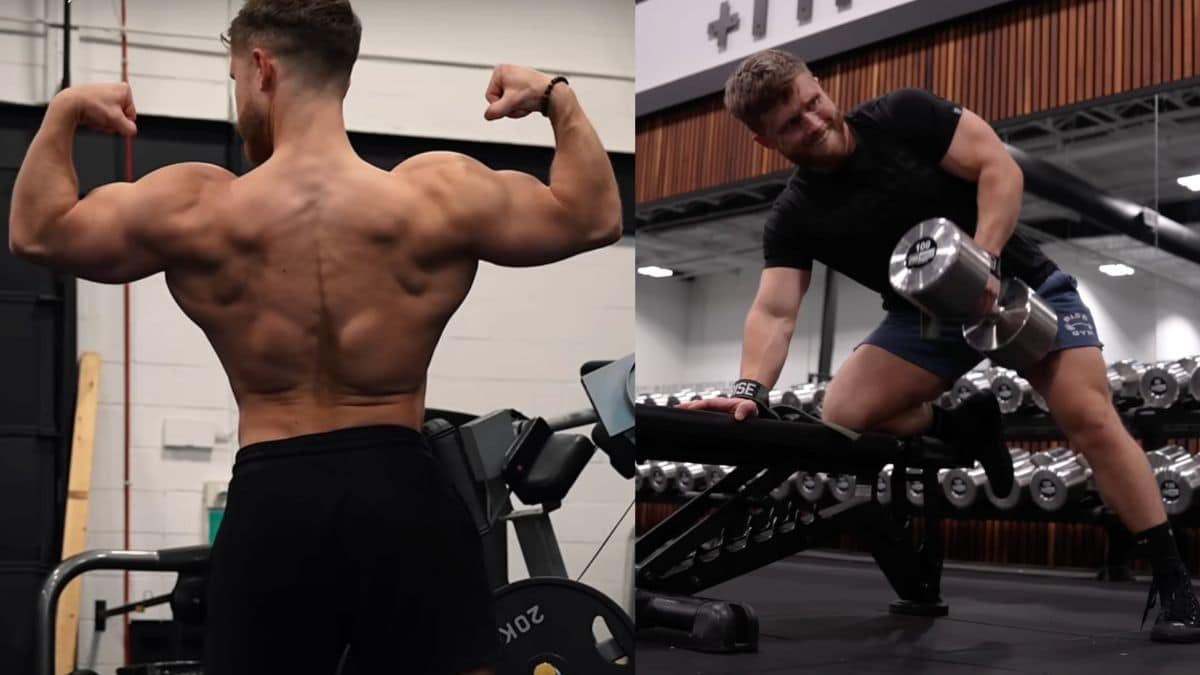
Jeff Nippard’s Ultimate Back and Biceps Workout Backed by Science
Jeff Nippard recently shared a science-backed high-volume pull-day workout for back and biceps gains.
Canadian fitness expert Jeff Nippard is one of the leading figures in the science-based YouTube fitness community. He is a lifelong natural bodybuilder, powerlifter, and personal coach. Nippard started training as a kid and went on to become the 2022 Mr. Junior Canada when he was 22 years old. As a powerlifter, he holds the record for 502-lbs squats, 336-lbs bench press and a 518-lbs deadlift. At one point, Nippard also held the Canadian national record for bench press.
Jeff Nippard’s knowledge comes from a degree in biochemistry and decades of training. He is a student of bodybuilding and continues to acquire and share knowledge. He routinely shares entertaining and informative videos on his YouTube channel that has amassed 3.8 million subscribers. Additionally, he has trained several natural bodybuilders and powerlifters to achieve their goals.
In recent months, Jeff Nippard has taken a deep dive into the minimalist training philosophy. He is in the process of releasing a six-part push–pull–leg training series based on the minimalist training principles. The most recent issue, a pull day workout was recently posted on Nippards’ YouTube channel. So let’s check out what Nippard has in store for us this time.
Jeff Nippard shares pull day workout and tips
One-Arm Half kneeling lat pulldown
Jeff Nippard advises to start the pull-day workout with this lat-focused exercise. Technique-wise, he suggests pulling the cable back until the upper arm is aligned with the body. Pulling the weight too far back is not ideal as the lats lose leverage once the arm goes behind the torso.
Nippard further stated that a lot of people prefer doing the lat pull-in where you pull the weight down from the sides. However, the teres muscles can take over the movement during the pull-in, causing the lats to get understimulated.
As of now, there is no scientific study that conclusively proves one exercise to be better than the other in terms of hypertrophy benefits. So as of now, choosing either of the two exercises is an individual preference without any specific benefits attached to it.
“I’d just say to roll with whatever one you feel hitting your lats harder. OR If you feel them both equally well, you can periodically rotate them in and out,” Nippard concluded.
You should perform three sets of the exercise adhering to a moderate 12 to 15 rep range.
Pull-ups
The advanced bodyweight movement follows the lat pulldowns. Personally, Jeff Nippard likes to do as many sets of pull-ups as possible. However, the lats already got the work during lat pulldowns and he feels that an-out set of pull-ups would be sufficient in this training session.
Additionally, Nippard’s priority is to make exercise enjoyable to a large variety of fitness enthusiasts. So while calisthenics enthusiasts might be excited to perform pull-ups, many bodybuilders are not in favor of doing them.
“While I do think that it’s important that your training is enjoyable, I also think pull-ups are a great exercise worth including that you shouldn’t avoid just because they’re harder than lat pulldowns.”
To address all of these factors and include this compound bodyweight movement into the workout, Nippard found the middle ground of performing one AMRAP set. The goal here should be to increase the number of reps every week while maintaining a consistent form.
“If you’re bulking, just matching the number of reps should be enough to present an overloading stimulus because as you gain weight, you’re adding resistance. But if you’re cutting, you should try to add at least one rep each week because as you lose weight, you’ll be lowering the resistance,” Nippard explained.
Technique-wise, putting the arms at a distance 1.5 times the shoulder width should be ideal and you can always use an assisted pull-up machine or resistance band if you’re at the early stages of development.
Kroc Rows
Nippard classifies Kroc rows as a more loose and slightly more upright version of dumbbell rows with ‘controlled cheating’. He argues that it is absolutely necessary to be more strict with the form, especially when you are a new lifter. But according to the Canadian fitness expert, you can restrict your progress in the name of perfect technique as you get into more advanced stages of development.
“Once you’ve mastered the technique basics, I don’t think there is anything wrong with a little controlled body English on select movements, especially if it allows you to overload the target muscles more effectively.”
Many elite professional bodybuilders allow their body to sway during exercises. Nippard drew attention to the fact that they are in control of the weight in spite of swaying, especially during the eccentric phase of the movement.
“The strength curve of the back exercises is actually very unique in that it’s super easy at the bottom and then much harder at the top. So if you stop at the first sign of any technique loss…”
He concluded:
“…You may be stopping well shy of the point where your back is fully stimulated. So using just a little bit of momentum at the bottom can help your back approach that point of full exhaustion much more effectively.”
Nippard does not advise cheating on exercises all the time. Instead, he feels that it can be an effective intensity technique in certain cases. Three sets of 10 to 12 reps on the Kroc rows should be enough for you to stimulate the back muscles.
Cable Shrug-Ins
The cable machine variation of shrugs should be the next exercise in the pull-day workout. Unlike the dumbbell or barbell shrugs where the weight moves along a straight vertical axis, the direction of movement is up and towards the center in cable shrug-ins.
According to Nippard, the direction of movement on cable shrug-ins lines up better with the orientation of the upper trap muscle fibers. As a result, shrugging up and towards the center is more effective for trap stimulation.
“That’s also why I generally recommend a slightly wider grip when doing barbell shrugs as it will force you to shrug up and in, and not just straight up and down,” Nippard concluded.
Once again, he advises doing three sets of this exercise for 12 to 15 reps before advancing to the next one.
Reverse Pec Deck Flyes
This rear delt-specific movement should be next in the workout. The focus here should be to push the weight out and back and not just back. This way, you can put more emphasis on the rear delts. According to Nippard:
“If you just pull the weight back, you’re going to shift a lot of focus on the mid-traps which isn’t a big deal if that’s what you’re going for. But we’ve already smashed the mid-traps with pull-ups and Kroc rows. So I’d much rather isolate the rear delts here since they’re usually overpowered by the bigger back muscles in those compound movements.”
You can experiment with the neutral, pronated, and internally rotated grip to stimulate the rear delt muscles in different ways and get the most benefits out of this exercise.
Overhead Cable Biceps Curls
Nippard is not a big fan of overhead biceps curls. However, he recently came across an experiment done by natural bodybuilders Alberto Nunes and Brian Miner. Both of them experienced more activation in the long head of the biceps during overhead curls.
There is little data to conclusively approve the findings of this experiment. But Nippard finds it worthwhile to at least experiment with this exercise. Three sets of 12 to 15 reps should usually suffice. But you can always add a couple of more biceps exercises to stimulate the muscles more.
Overall, the workout must include:
Jeff Nippard’s fitness advice stems from extensive research and study. So there is a high probability that you might be able to make better gains if you follow the training routine. So head over to the gym and give this pull-day workout a try!
You can watch the full video here, courtesy of Jeff Nippard’s YouTube channel:
Published: 27 July, 2023 | 11:07 AM EDT
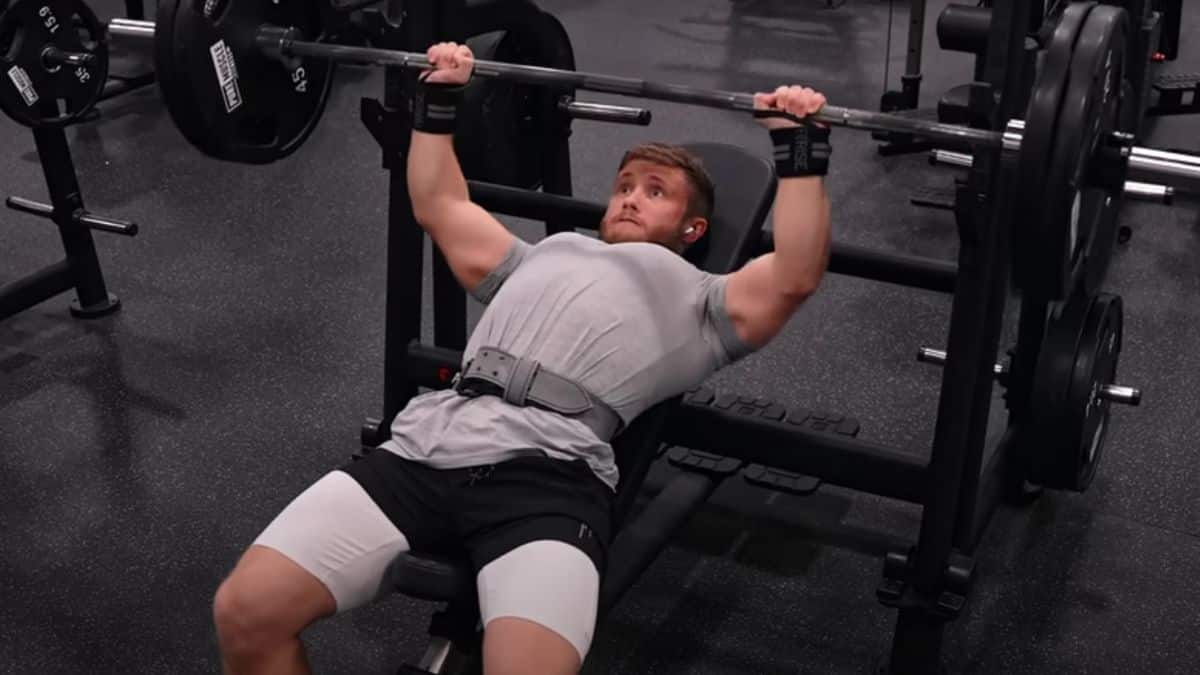
Jeff Nippard Shares Science Based Push Day Workout
Maximize muscle growth with Jeff Nippard’s effective push-day workout routine.
Jeff Nippard has laid down a near-perfect training plan with the first part of his push-pull-leg training series. It is based on minimalist training principles and he recently shared another push-day training session that compliments the first one in the series.
Nippard is a Canadian natural bodybuilder, powerlifter, and fitness expert. He is the 2012 Mr. Junior Canada and also held the Canadian national record for bench press. He has garnered a huge social media following due to his science-based bodybuilding and fitness content. At the time of this article’s publishing, Nippard has a whopping 3.81 million YouTube subscribers.
His content primarily focuses on educating the masses about the right approach to diet and training. The Canadian backs up most of his advice with findings of extensive studies and published medical material. Apart from training and study, Nippard’s knowledge comes from his formal education – a bachelor’s degree in biochemistry. Many professionals have put their faith in Nippard as he has trained several natural bodybuilders and powerlifters in men’s as well as women’s divisions.
In recent months, Jeff Nippard has shared content that deals with methods for boosting metabolism, sustainable weight management, and common nutritional mistakes. His most recent video, a push-day workout, is the fourth installment of a six-part push-pull-leg series. This training session compliments the first push-day workout of the series which we have already covered. So let’s check out the unique benefits this training session has brought for us.
Jeff Nippard’s Push-Day Workout
Close Grip Barbell Incline Bench Press
This compound pushing exercise is the main exercise of the push day workout. Nippard suggested doing a few warm-up sets of the movement before jumping into the working sets. He introduced this as an undulating set model. The first working set should include moderate weights while the second set must be done with heavier weights. The third set, which must include lighter weights, should be done for a maximum number of reps.
“First set of eight will give you a much better idea of how much weight you should add for the following heavier set of five. Just make sure you rest for at least three to four minutes in between those sets so your pecs are feeling recovered and capable of going up in weight.”
While the first two sets are intended for getting the benefit of progressive overloading, the third set will help build mind-muscle connection when performed with lighter weights. After putting in the right amount of work in close grip incline bench press, Nippard moves on to a shoulder exercise.
Machine Shoulder Press
Incline bench press works the anterior deltoid muscles to a great extent. However, Nippard feels the need to train the shoulders with a bit more volume without taxing the body too much. As a result, a machine shoulder press is his preferred exercise.
Machines tend to be less fatiguing as you don’t need to control the weight. You can push a little closer to failure because you can use heavier weights on machines without the risk of dropping weights or getting injured.
“Obviously, machines won’t hit some of the smaller stabilizing muscles quite as well as free weights will. But as long as you’re still including some free weight exercises, I think that concern about machines pretty much goes away anyway!” Nippard said.
Keeping arms parallel to the ground after lowering the weights is sufficient to achieve the necessary range of motion during shoulder press. But Nippard prefers to go a little further down to get a deep stretch in the muscles.
“I also use a thumbless grip on these because I find it improves the mind-muscle connection,” he added.
After doing the stipulated three sets, Jeff Nippard takes on a tricep exercise next.
Floor Reset Skull Crushers
Shifting his focus to tricep work, the Canadian fitness expert performs this strength-focused tricep exercise.
“I’m including this because on my other push day of the week, I do more hypertrophy focused higher rep tricep movement on the cables.”
Nippard does floor reset skull crushers with heavier weights and maintains a low (6 to 8) rep range, putting more emphasis on progressive overload. Nippard explained the steps of performing each rep with minute details. Personally, he aims to lift the weight to full or close to full elbow flexion. He controls the weight up to half way down in the eccentric phase.
After this, he lets the weight fall down and come to a complete dead stop on the ground before initiating the next rep. This method is efficient for making strength gains. However, you can make the exercise more hypertrophy oriented by following this advice from Jeff Nippard:
“I would suggest resisting and controlling the negative all the way down to the floor from a pure hypertrophy standpoint.”
However, strength gain is Nippard’s primary objective here and he suggests applying the progressive overload principle without fail.
Bent Over Cable Flyes
Although it might be mistaken with decline cable flye, bent over pec flye is a different exercise. Arms movement in bent over cable flyes is still perpendicular to the chest and not at a lower angle. As a result, it activates all regions of pectoral muscles. But it still puts more emphasis on mid-pecs.
Technically, bent over cable flyes are similar to the regular cable crossover. However, Nippard argues that the cables can pull you backwards during the eccentric phase of the exercise when you are in an upright position. The constant backward pull from cable can make it harder to maintain balance and stability, limiting the amount of tension in pecs.
“So by leaning forward over the cables, you’ll be more stable since your body weight is grounded with the floor and it should allow you to direct more tension onto the pecs,” Nippard concluded.
He performs three sets of bent over cable flyes and takes up a side delt movement next.
Machine Lateral Raises
Nippard includes this high intensity medial delt exercise in the training routine. Although he performs three sets of 20 reps, those are not regular sets. He splits every set into two parts. For the first part of five reps, he performs the exercise with slow negative reps. The eccentric phase of these reps lasts for five seconds. Reps 6 to 20 are regular reps with constant tension.
“For those first five reps, the slow eccentrics should help you find your delts on the negative and you should be able to zone in on feeling the side delt fibers pulling and then, when you’ve locked that connection in, from there you can kind of just blast them with more standard constant tension reps,” Nippard explained.
There is no particular benefit of this method. However, it can be extremely beneficial for people that do not feel the side delts through regular reps.
Plate Front Raises
Jeff Nippard is not a big fan of anterior delt exercises like front raises. He feels that anterior delts get enough stimulation during compound movements and tend to be overdeveloped in comparison with lateral delts in many cases.
However, there is a way to perform front raises without putting too much emphasis on front delts. According to Nippard, you can actually work the middle segments of muscles between anterior and side delts if front raises are modified properly.
Steering the plate during front raises is an effective variation that can help engage these muscles. As explained by Nippard, side delts are engaged along with anterior delts when the arm is internally rotated during a front raise.
Dumbbell Y-raises are a good alternative to achieve the same effect for people that experience pain during the front raises with internal rotation.
Diamond Push-ups
Nippard likes to finish the workout with an all-out set as there are no sets ahead to preserve the energy for. Additionally, it gives a huge mental boost knowing that you gave it all to the training session.
The diamond push-up form forces the triceps to work harder than they do in most other push-up variations. He performs one set of diamond push-ups to failure and wraps up the training session.
The push-day workout includes following exercises, number of sets and rep range:
Warm-up
5 mins on the treadmill or stair master
Dynamic stretches – arm swings, cable external rotations etc.
Close Grip Barbell Incline Bench Press
Warm-up sets
1st set – empty bar X 10 reps
2nd set – 50% working weight X 4 reps
3rd set – 75% working weight X 3 reps
Working sets
1st set – moderate working weight X 8 reps
2nd set – heavy working weight X 5 reps
3rd set – light working weight X 15 reps
Machine Shoulder Press
3 working sets of 10 to 12 reps
Floor Reset Skull Crushers
3 sets of 6 to 8 reps
Bent Over Cable Flyes
3 sets of 10 to 12 reps
Machine Lateral Raises
3 sets of 20 reps
Plate Front Raises
2 sets of 15 to 20 reps
Diamond Push-ups
1 set to failure
Jeff Nippard has ensured that his content is backed by proven data and he has done a great job of staying away from bro science. This ensures that his advice will be beneficial for most people, if not everyone. So what are you waiting for? Head over to the gym and try incorporating Jeff Nippard’s push day training session in your training.
You can watch the full workout video here, courtesy of Jeff Nippard’s personal YouTube channel:
Published: 5 July, 2023 | 3:01 PM EDT
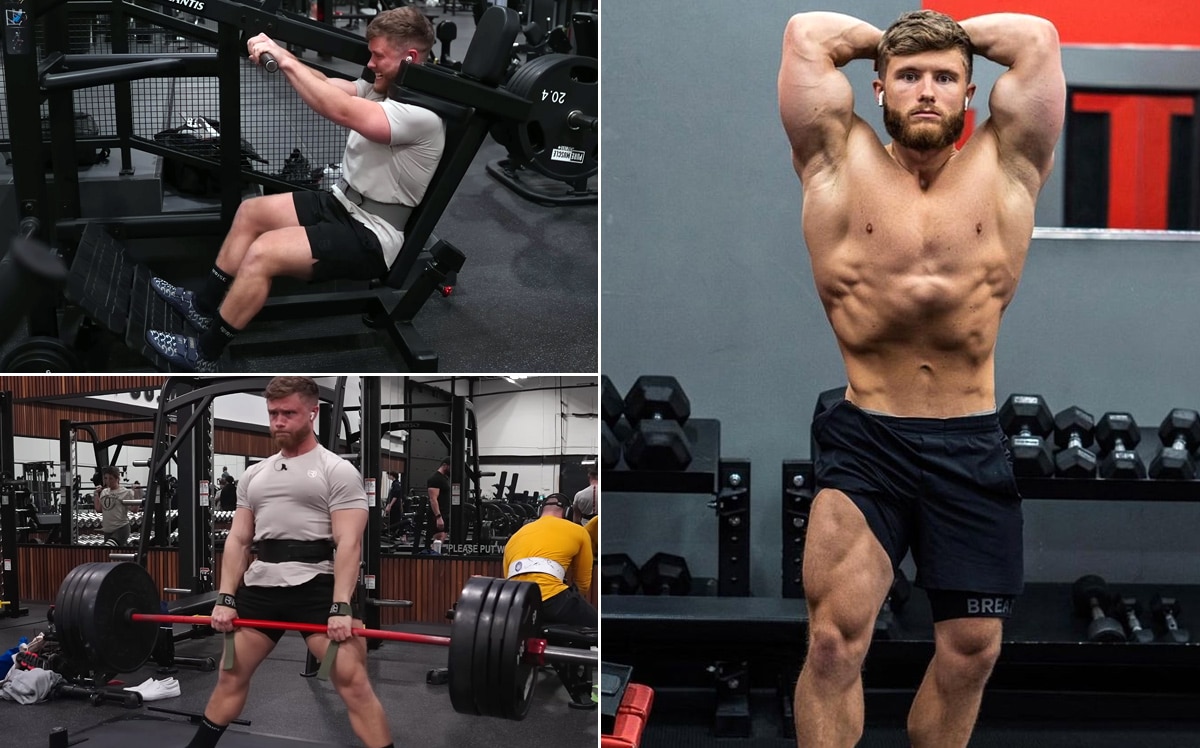
Jeff Nippard Destroys A Killer Leg Day Workout
Fitness expert Jeff Nippard never ceases to amaze the fitness community with his science backed insights on training and nutrition. Recently, Nippard tackled a lower body training session and shared some insightful tips as he went along.
Jeff Nippard is a Canadian natural bodybuilder, powerlifter, fitness expert and personal trainer. He has carved a niche for himself in the YouTube fitness community with science backed content. Apart from years of training, Nippard’s knowledge comes from a bachelor’s degree in biochemistry.
Over the years, the Canadian has trained many natural bodybuilders and powerlifters. Nippard himself held the 2012 Mr. Junior Canada title and also had the Canadian national record for bench press attached to his name.
Nippard’s YouTube content revolves around sustainable and scientifically proven methods of training and diet. Over the last few months, he has shed light on topics like minimalist training principles and common nutrition mistakes. His six-part Push Pull Leg series based on minimalist training philosophy is also underway on his YouTube channel.
In his recent leg training session, Nippard trained with Layne Norton. He is a professional natural bodybuilder and a powerlifter who has led successful careers in both disciplines. He holds a bachelor’s degree in biochemistry and a PhD in Nutritional Sciences. As a result, the 38-year-old has also made significant contributions to the community with several publications. Norton guided Nippard to winning the Canadian National Gold Medal in 2012.
“He’s the first person who convinced me that you don’t actually need to eat clean to get shredded as long as you hit your macros,” Nippard stated.
Nippard attributes his knowledge of training and nutrition to Norton. So, let’s check out how the coach and student turned the clock back and got a good day’s work in.
Jeff Nippard goes through a science-based lower body training session
Warm-Up
Nippard and Nortan warmed themselves up with a few dynamic warm-up drills before jumping into the workout. They performed bird dogs and hip-Back opener for 5 reps per side and started the workout.
Exercise 1: Deadlifts
The duo took to the deadlifts next and worked their way up to one heavy top set of two reps (a heavy double). Nippard reiterated that one heavy set per week is enough to get most out of an exercise if you want to keep the volume low for injury prevention or if you don’t have a lot of time to spend in the gym.
“People confuse ‘what works’ with ‘optimal’. Is a single set per week ideal for strength? Probably not. However, for me it is much more important to be able to continuously and consistently be in the gym. If that means I should do a little bit less volume on the main lift so that I can stay healthy and stay in the gym, then that’s still better practically than what might be optimal in theory,” Dr. Layne Norton said.
Nippard and Lane performed a full warm-up pyramid to work their way up to the heavy top set. After performing the working set for two reps at 7 to 8 RPE, the duo moved on to the next exercise.
Exercise 2: Pendulum Squats
Nippard and Layne performed pendulum Squats as the second exercise of the lower body training session.
The pendulum Squats machine in Nippard’s gym offers great support to the lower back which is the reason it’s his favourite machine.
“And I find it offers a smoother movement path than a hack Squat. The counter balance is also behind you which I find makes it a little easier to get out of the hole and a little harder at the lockout. So that makes the strength curve feel very unique,” Nippard stated.
Additionally, the pendulum squat machine enables pushing close to failure safely which makes it a good hypertrophy exercise.
After a few warm-up sets, Nippard got a working set of 8 to 10 reps under his belt with an RPE of 9. Following this set, he moved on to the next exercise of the day.
Exercise 3: Glute-Hamstring Raises
This hamstring focused exercise followed the pendulum Squats. Nippard and Norton performed this movement on the glute hamstrings raise machine. It uses weight for assistance and not for resistance. Therefore, the less weight you use, the harder the movement gets.
The duo performed three sets of this movement for 8 to 10 reps and jumped into the next exercise.
Leg Extensions
Nippard and Layne Norton performed this quad isolation movement next to the Prime Fitness leg extensions machine. The machine has three plate horns and loading the plates on different weight horns emphasizes different aspects of the range of motion.
Loading the weight on the top horn emphasizes the stretch aspect while loading it on the middle horn spreads the load more evenly throughout the range of motion. However, using the bottom horn can help emphasize the contracted position at the top of the movement.
“If you think about where you are strongest in a leg extension, you are actually strongest at the beginning. So you’re strongest in the stretched position,” Norton said.
He added:
“Another point I like to make about leg extensions is you really want to get the leg Extensions so that the pad goes under the seat as far as possible. The further back this pad goes, the more stretch you get in the quads. There is pretty conclusive literature demonstrating that the stretched position is really critical for hypertrophy.”
Nippard and Norton performed three sets of leg extensions and focused more on the stretched position of the calves. They performed a few partial reps in the stretched position at the end of the set as an advanced intensity technique and took to the final exercise of the day.
Leg Press Toe Press
Jeff and Layne wrapped up the training session with this exercise to train the calves. They performed 3 sets of this exercise for 12 to 15 reps and called it a day in the gym.
Overall, the workout included:
Warm-up
Bird Dogs – 5 to 10 reps per side
Hip and Back Opener – 5 reps per side
Workout
Exercise 1: Deadlifts
First warm-up set – 4 to 5 reps with 45 percent of the weight you intend to use for the working set
Second warm-up set – 3 to 4 reps with 65 percent of the weight you intend to use for the working set
Third warm-up set – 1 to 2 reps with 85 percent of the weight you intend to use for the working set
Working set – 1 set of 2 reps (Heavy Double) @ RPE 7 to 8
Exercise 2: Pendulum Squats
Warm-up sets – 2 to 4 sets of 2 to 5 reps (gradually add more weight)
Working set – 1 set of 8 to 10 reps @ 8 to 10 RPE
Exercise 3: Glute-Hamstring Raises
3 sets of 8 to 10 reps
Exercise 4: Leg Extensions
3 sets of 10 to 12 reps
Exercise 5: Leg Press Toe Press
3 sets of 12 to 15 reps
Jeff Nippard’s YouTube content is a potent source of Pre-workout motivation and bodybuilding knowledge. Stay tuned with Fitness Volt for more such fitness content.
You can watch the full video here, courtesy of Jeff Nippard’s personal YouTube channel:
Published: 17 April, 2023 | 9:01 AM EDT
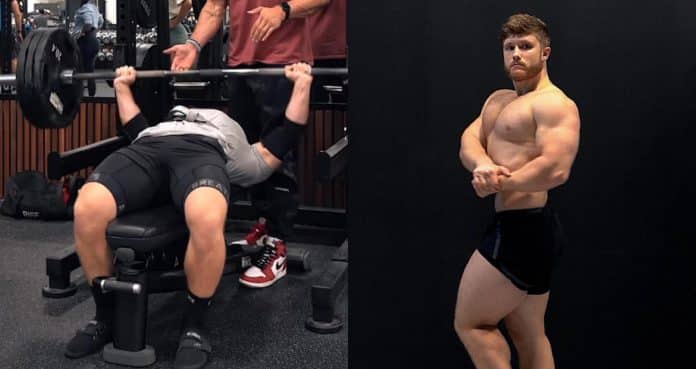
Volume vs. Intensity During A Cut: Jeff Nippard Believes “Maintaining Strength” Is The Best When Retaining Muscle Mass
Jeff Nippard advocates for strength over volume during a cut.
Jeff Nippard has dabbled in both bodybuilding and powerlifting over the course of his career. He has built a large following on social media, where he can share his knowledge and wisdom on all things muscle building. Recently, Nippard decided to give bodybuilding another shot and entered a cut phase. This allowed him to discuss what is best for muscle building during this past — volume or intensity.
Nippard won the 2012 Mr. Junior Canada title to put his name on the map. Since then, he has become an elite coach because of his success on the stage and his overall knowledge of fitness. Nippard took to Instagram to share a video of a set on the bench press at 315 pounds. In his caption, Nippard went into detail about retaining muscle while cutting.
“There’s a lot of debate about whether volume or intensity is more important for retaining muscle on a cut. I’ve always been of the opinion that intensity maintains muscle better than volume and if something has to drop (usually it will, eventually) it’s better to drop volume than intensity.”
Volume vs. Intensity While Cutting
It seems as though upping the number of reps during a cutting phase has become popular. The idea of heavy lifting does not typically go with the thought of cutting down, especially when you are not bringing in the amount of calories you are accustomed to. According to Nippard, this remains the best way to retain muscle as you get leaner.
“IMO maintaining strength in the ~4-8 rep zone for as long as you possibly can is one of the best ways to retain as much muscle mass as possible as you get leaner. That high level of tension on the muscle is key for forcing it to stick around.”
Jeff Nippard believes that focusing on quality execution of each rep will benefit in the long run. He explains that this is a better process than reducing the weight to reach a higher volume that might be meaningless.
READ MORE: Jeff Nippard: The Smartest Push, Pull, Legs Routine
During his powerlifting career, Nippard has reached a Wilks score of 446. He has completed a 228kg (502lb) squat, a 151kg (336lb) bench press, and a 235kg (518lb) deadlift. Nippard has made it a point to remain close to these numbers, despite being in a cutting phase.
“Obviously, at a certain point your strength WILL decline (less body mass necessarily means less power at a certain point) but the goal should be to delay that decline as long as you reasonably can.”
[embedded content]
For more news and updates, follow Generation Iron on Facebook, Twitter, and Instagram.
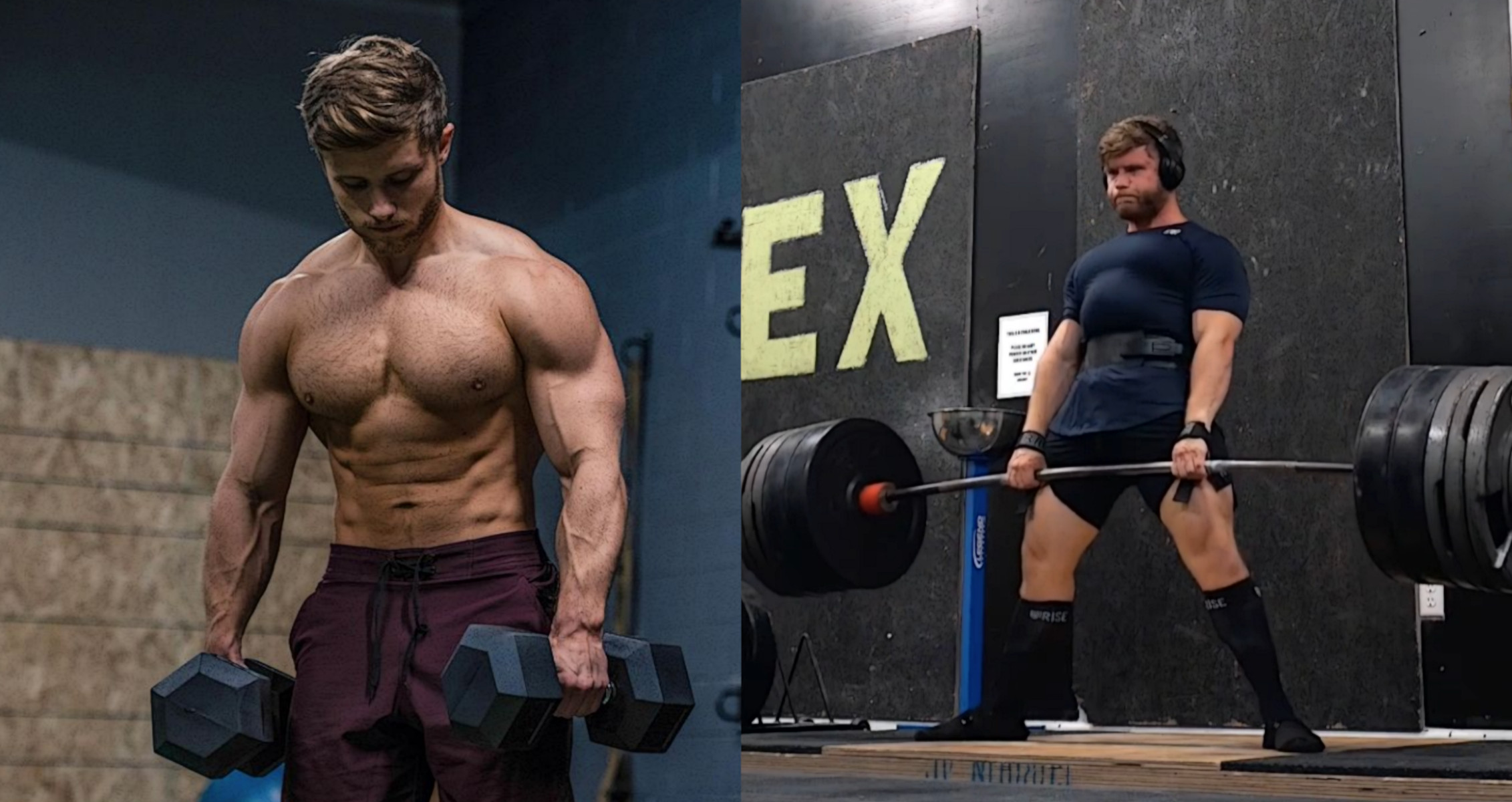
Jeff Nippard: The Smartest Push, Pull, Legs Routine 2021
Jeff Nippard has done it again with his latest Push, Pull, Legs routine.
Jeff Nippard has recently presented a truly impressive Push, Pull, Legs routine. The popular bodybuilder and trainer, Nippard has helped a great deal of people with his knowledge and information. His recent video gives an in-depth look at what he deems the smartest Push, Pull, Legs routine.
Push, Pull, Legs. It’s a training split that has garnered a ton of praise from bodybuilders in recent years. The program is a pretty simplistic one. Essentially each portion of the split is broken up in a way that will allow the user to work every body part while at the same time giving enough time to recover from each separate day.
Push
Push days encourages the user to perform pushing exercises. This means the focus can be on chest, arms, and shoulders depending on the exercises used. For example, the bench press is push exercise that focuses much of the attention on the chest and triceps. Another push exercise would be dips again focusing on the triceps.
Pull
On pull days the emphasis is on pulling exercises. Pulling exercises can work the back, the biceps/arms, and the shoulders. Essentially the biggest difference here is that the exercises are much more focused on the back. While the arms and shoulders still get a great deal of attention the back is definitely the centerpiece.
Legs
Lastly there are leg days which switch up the focus to leg exercises. This means anything from working the quads with squats to the posterior chain including the hamstrings and glutes with the deadlift.
The Jeff Nippard Method
Jeff Nippard has become extremely well respected in the bodybuilding community in recent years. He has used an evidence based approached to offering up essential bodybuilding knowledge that has taken many of his clients and followers to the next level.
Jeff Nippard Push, Pull, Legs Routine
Legs 1 Day 1:
Squat: 3 Sets x 4 Reps (80% 1RM)
Romanian Deadlift: 3 Sets x 10 Reps
Single Leg Press: 3 Sets x 15 Reps
Eccentric Leg Extension: 3 Sets x 10-12
Seated Leg Curls: 3 Sets x 10-12 Reps
Standing Calf Raise: 3 Sets x 10-12 Reps
*Decline Crunches: 2 Sets x 10-12 Reps
*Long-Lever Planks: 2 Sets x 30s
*SUPERSET*
Push 1 Day 2:
Bench Press: 3 Sets x 8 (72.5% 1 RM)
Machine Shoulder Press: 3 Sets x 12
Dips: 3 Sets x 12-15 Reps
Eccentric Skullcrushers: 3 Sets x 8-10
Egyptian Lateral Raise: 3 Sets x 12+MYO
Cable Tricep Kickback: 3 Sets x 20-30
Pull 1 Day 3:
Weighted Pull-Up: 3 Sets x 6 Reps
Seated Cable Row: 3 Sets x 10-12 Reps
Cable Pullover: 3 Sets x 15-20 Reps
Hammer Cheat Curl: 3 Sets x 8-10 Reps
Incline Dumbbell Curl: 2 Sets x 12-15
Legs 2 Day 4:
Deadlift: 3 Sets x 3 Reps (80-85% 1RM)
Hack Squat: 3 Sets x 10-12 Reps
Single-Leg Hip Thrust: 2 Sets x 15 Reps
*Nordic Ham Curl: 2 Sets x 10-12 Reps
*Prisoner Back Extension: 2 Sets x 10-12
*SUPERSET*
Single-Leg Calf Raise: 3 Sets x 8-10 Reps
Weighted L-Sit Hold: 3 Sets
Push 2 Day 5:
Overhead Press: 4 Sets x 4 Reps (80%)
Close-Grip Bench Press: 3 Sets x 10
Cable Crossover: 3 Sets x 10-12 + Drop
Overhead Tricep Ext: 3 Sets x 10-12 Reps
Lateral Raise 21’s: 3 Sets x 7/7/7
Neck Flexion/Extension: 3 Sets x 10-12
Pull 2 Day 6:
Omni-Grip Lat Pulldown: 3 Sets x 10-12
Chest-Supported Row: 3 Sets x 10-12
Rope Facepull: 3 Sets x 15-20 Reps
*Incline Dumbbell Shrug: 3 Sets x 15-20
*OPTIONAL*
Reverse Pec Deck: 2 Sets x 15 + 10-15
Pronated/Supinated Curl: 3 Sets x 10/10
To see Jeff Nippard perform the full routine, click on the link here.
What do you think of Jeff Nippard and his Push, Pull, Legs routine?
For more news and updates, follow Generation Iron on Facebook, Twitter, and Instagram.
Managing Editor at Generation Iron, Jonathan Salmon is a writer, martial arts instructor, and geek culture enthusiast. Check out his YouTube, Instagram, Twitter, Facebook, and Sound Cloud for in-depth MMA analysis.

